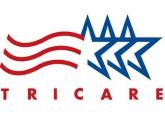Government and Regulations

New Guidance on Compounded Drugs
As of May 1, 2015, a new screening process will take effect for compounded drugs, which make up only 0.5% of total TRICARE prescriptions but...
Dr. Schuh was a clinical medication safety pharmacist at the time of the manuscript submission, and Mr. Hewuse is currently a pharmacy technician, both at Evans Army Community Hospital in Fort Carson, Colorado.
An editorial by Ruef addressed overprescribing patterns and hypothesized that prescribers may be more cautious and prescribe antibiotics (without laboratory confirmation), because if medications are not prescribed, patients with a potentially serious, quickly developing infection may experience an adverse outcome.6 Additionally, there is the anticipation and pressure from patients to receive a medication. Although only 60 of the 1,174 prescriptions were antibiotics or antifungals, one could easily insert other indications into this rationale.
Related: Pharmacists in the Emergency Department: Feasibility and Cost
During the collection period, the problem of polypharmacy stemming from the emergency department (ED), independent of this QI project, was brought to the authors’ attention. Consequently, data were collected from patients who presented for what was perceived (by both the patient and the pharmacy) as a high number of prescriptions from the ED. The data were reviewed and analyzed to determine whether there were any correlations between perceived excessive prescribing and the patient medication return data.
This study found that of 54 patient visits, there were a total of 324 prescriptions with a median of 6 prescriptions per person. The majority (56%) of these prescriptions were for OTC medications. The top 5 medications prescribed were ibuprofen, acetaminophen, ondansetron, oxymetazoline, and pseudoephedrine; 4 of which are OTC medications. The top 5 classifications of medications were decongestants, nonsteroidal anti-inflammatory drugs, analgesics, antibiotics, and antiemetics.
In contrast to the patient return data with 5 of the 6 top medications prescribed for chronic conditions, it is no surprise that the top 5 ED medications were prescribed for acute conditions. Ondansetron, which costs up to $0.37 per tablet, was one of the top prescribed medications from the ED and one of the most frequently returned medications. One might question whether this was a misuse of ED resources, considering patients were seen in this costly setting and received OTC medications. Further study of misappropriation of resources in the ED and trends from other clinic areas are needed.
In addition, it was observed that the pharmacy was overfilling prescriptions. Inaccurate quantities dispensed may have been due to human error and also due to staff belief that it would cost more (in staff time) to count the exact quantity prescribed for medications supplied in a manufacturer bottle near the amount needed for the prescription. It has been noted by pharmacy staff that deviation from exact counts is only done with medications that do not have a significant cost per tablet or capsule. The cost of medications intentionally overfilled was $70.26—not an insignificant source of waste.
Related: Pharmacist-Managed Collaborative Practice for Chronic Stable Angina
Medications returned to stock (because patients never picked up the prescription) were not used for future prescriptions but rather placed in the patient return collection for destruction. After this practice was noted, these returned-to-stock products were segregated to evaluate the value of the medications that could have been used for future prescriptions. Seventy-six prescriptions could have been dispensed, and the value of these unused medications was $3,049. Whereas civilian retail settings would not allow the practice of destroying medications that can otherwise be dispensed, this practice was permitted at EACH.
It was hypothesized in this study that patients were returning medications because the prescriber switched the medication, the patient ultimately did not need the medication because symptoms resolved on their own, the patient may have had an AE or tolerance issues, the patient died, the dose was adjusted, or the patient had duplicate prescriptions. Further exploration regarding patients’ perspectives should be considered.
Similar to many other institutions across the country, EACH has been affected by drug product shortages. There are a number of contributing factors to these shortages, including raw and bulk material unavailability, manufacturer difficulties and regulatory issues, voluntary recalls, change in product formulation or manufacturer, unexpected increases in demand, and shifts in clinical practice.7
An example of a recently recalled medication is atorvastatin. Historical data indicate that EACH paid $0.08 per tablet ($6.77 for a 90-day supply). After the generic manufacturer recalled atorvastatin, the brand-name product needed to be ordered, which cost $1.93 per tablet (or $173.70 for a 90-day supply). During the study, 370 atorvastatin tablets were returned, 90 of which were the brand-name tablets. It was unfortunate that this quantity was dispensed, considering these tablets were destroyed. If it is possible to limit quantities dispensed on manufacturer recall/ back order products until the price is more reasonable, without a significant disruption in patient care, pharmacies may consider policy changes.

As of May 1, 2015, a new screening process will take effect for compounded drugs, which make up only 0.5% of total TRICARE prescriptions but...
In a pilot study at the Atlanta VAMC, pharmacists in the emergency department helped prevent adverse drug events, improved patient satisfaction,...
Patients with chronic stable angina who visited this practice experienced clinically significant changes in physical limitation, angina stability...
